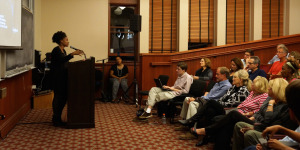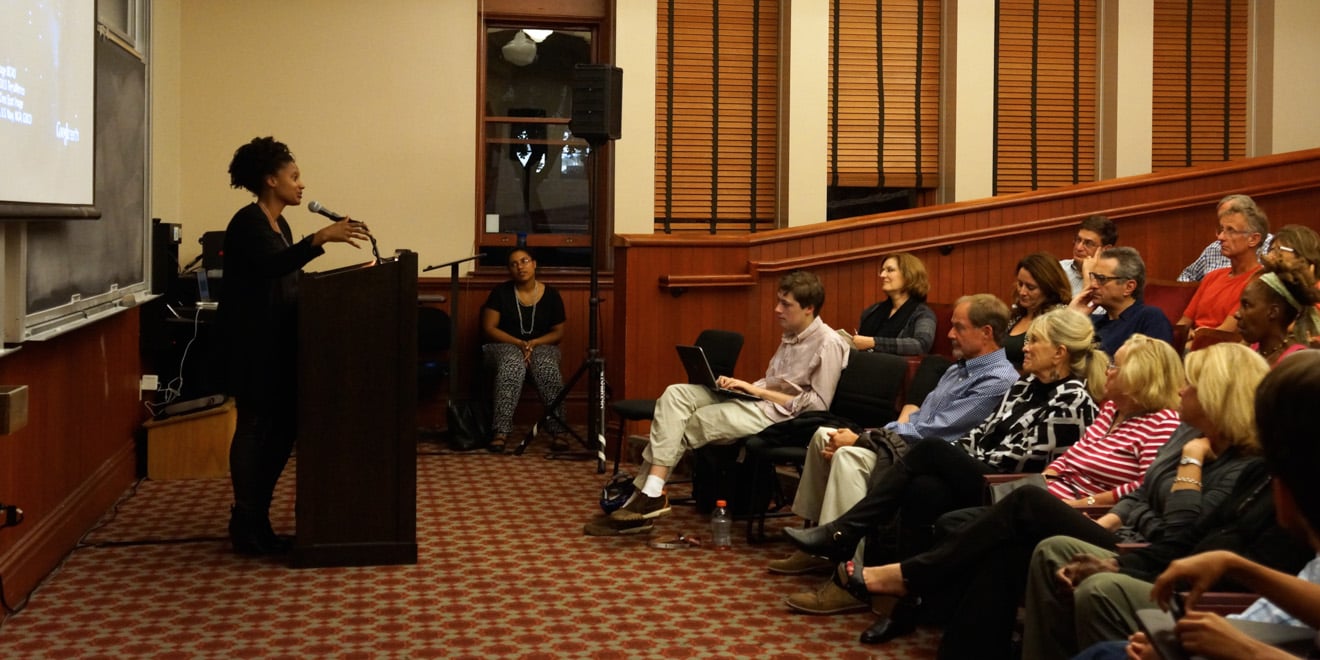
(KRISTEN STIPANOV/The Stanford Daily)
The Stanford Arts Institute’s new year-long “Imagining the Universe” initiative held its inaugural event on Tuesday night, as Princeton Professor of Creative Writing Tracy K. Smith read selections from her Pulitzer-Prize winning poetry collection “Life on Mars” while discussing her creative process.
According to Matthew Tiews, executive director of Arts Programs, the idea for “Imagining the Universe” came from the physics department, hoping to bring arts and physics together to talk about the ways that scientists and artists have represented the cosmos. Many departments from across the University have also become involved in the initiative.
During Tuesday’s event, Smith explained how “Life on Mars” examines the future as depicted in science fiction while relating to the conceptualization of space, mortality and the meaning of human struggles. Smith noted that she found inspiration in films such as “2001: A Space Odyssey,” which were very characteristic of when they were made.
Indeed, she saw these films as filmmakers’ elegies to the times they were living through, serving as an inspiration for her own creative process. Smith also discussed the grief she felt at the passing of her father, who had been an engineer working on the Hubble Space Telescope, and how this had given her a connection to space.
Despite the title of her work, Smith said she believes that her work is truly about life on Earth, driven by simple questions that could be spun in infinite questions, such as “What does living feel like?”
Several of the read poems considered how concepts that drove mankind over time, such as religion, sexuality and love, could become meaningless abstractions in the deep future. Other passages examined ideas such as the contemplation of death in the context of the vastness of the universe, framing life as part of a much larger journey.
“I guess that [the reading] just hopefully offers another scale upon which to think about some of these ideas, and I hope that maybe also a sense of language as a really vital tool for thought and reflection might be worthwhile,” Smith said after the session.
Ramiro Galperin ’15 had been recommended to read Smith’s work by a poetry instructor, and was pleased with the event.
“It was inspiring. I got some good stuff out of it,” Galperin said.
Tiews added that upcoming programming as part of the “Imagining the Universe” initiative includes a Cantor Arts Center exhibit of Robert Rauschenberg’s “Stoned Moon” series, theater productions and even a Thinking Matters course in the winter.
He added that the next speaker in the series will be veteran astronaut Mae Jamison. Performances include “Cosmic Reflections” by the Stanford Symphony Orchestra, which will incorporate a video depicting the entire history of the universe from the Big Bang until present day.
Contact Skylar Cohen at skylarc ‘at’ stanford.edu.
